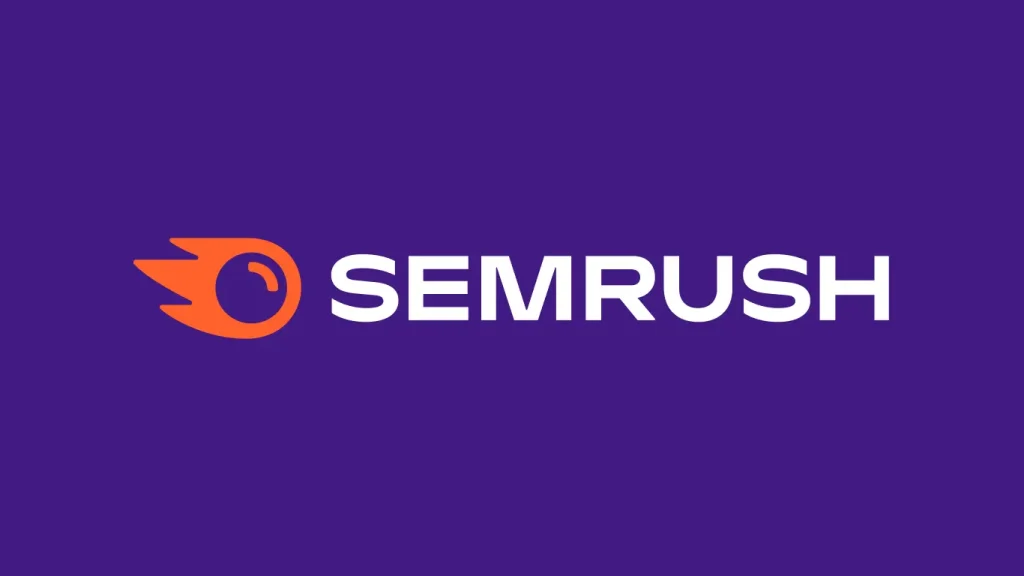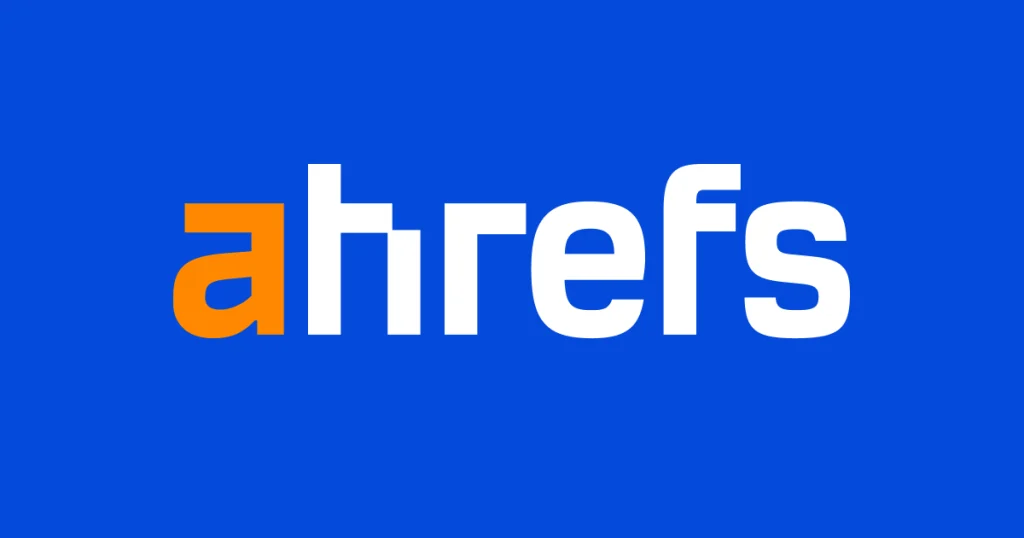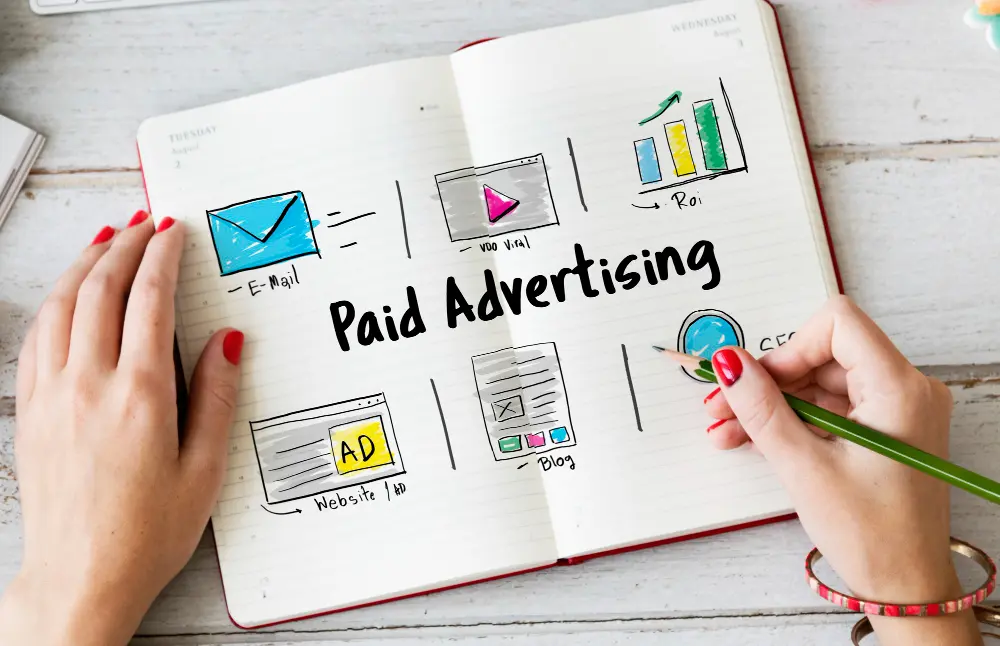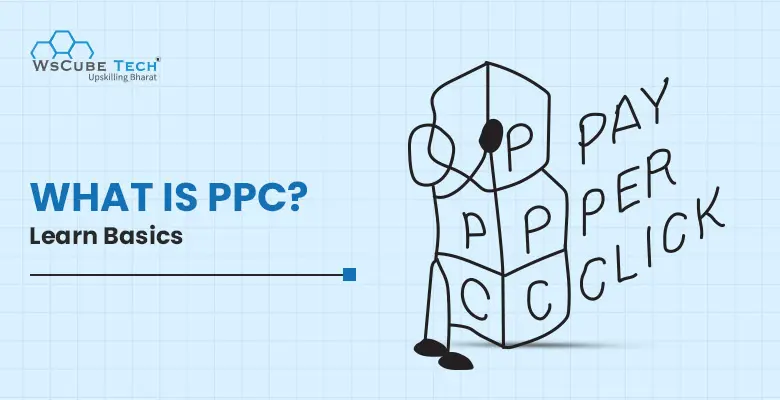Understanding the mechanisms behind online advertising is crucial for anyone looking to advance their career in marketing or grow their business.
At the core of this digital marketing toolkit is PPC, or Pay-Per-Click advertising, a model that has transformed the way brands reach their audience. But what is Pay-Per-Click advertising, and why is it so important in digital marketing?
Today, we will break down everything about PPC in digital marketing, offering a comprehensive look into its workings, benefits, and strategic implementation. Whether you’re aiming to enhance your career prospects in digital marketing or use PPC to scale your business, our insights will equip you with the knowledge needed to navigate the PPC effectively.
PPC Full Form
PPC stands for Pay-Per-Click.
Pay Per Click is a digital advertising model used on websites, including search engines and social media platforms, where advertisers pay a fee each time one of their ads is clicked.

What is PPC in Digital Marketing?
Pay-Per-Click, or PPC, is like placing a digital billboard on the internet where you only pay when someone shows interest and clicks on your ad. Imagine you have a lemonade stand and you put up posters around the neighborhood.
Instead of paying for the posters to be up for a certain time, you only pay every time someone sees the poster and visits your stand. In the online world, your poster can appear on search engines like Google or social media platforms like Facebook and Instagram.
For example, if you’re selling handmade jewelry and someone searches “buy handmade necklace” on Google, your ad for your jewelry store might pop up at the top of their search results.
If the person clicks on your ad, you pay a small fee for that click, hence the name “Pay-Per-Click.” This method helps you reach people who are already interested in what you’re offering, making it a powerful way to grow your business or website.
Upskill Yourself With Live Training (Book Free Class)
History and Evolution of PPC Advertising
The concept of Pay-Per-Click (PPC) advertising emerged in the mid-1990s, marking a significant shift in the way advertising worked on the Internet.
The Early Days
- 1996: One of the first documented versions of a PPC model was launched by Planet Oasis, offering spaces on its website for advertisers to display ads, with charges based on the number of clicks.
- 1998: GoTo.com, later known as Overture Services Inc., pioneered the PPC advertising model that we are familiar with today. They allowed advertisers to bid on keywords, directly linking the cost of the ad to its popularity and relevance.
Growth and Expansion
- 2000: Google AdWords (now Google Ads) was launched, revolutionizing PPC advertising by introducing a quality-based element to the bidding process, where ads were ranked not just on bid price but also on relevance and click-through rate. This made PPC ads more competitive and effective.
- 2002: Google introduced the AdWords self-service portal, significantly lowering the barrier to entry for advertisers and leading to widespread adoption of PPC advertising.
- 2003: Yahoo acquired Overture Services Inc., integrating its PPC system into its search engine, further expanding the reach of PPC advertising.
Maturation and Diversification
Over the years, PPC advertising has matured with the development of sophisticated targeting and bidding options, including geographic targeting, device targeting, and the introduction of ad extensions.
- Social Media Platforms: Facebook, LinkedIn, Twitter, and others introduced their own PPC advertising models, allowing advertisers to target users based on a wide array of demographic and psychographic factors.
- Remarketing: The introduction of remarketing (or retargeting) allowed advertisers to reach users who had previously visited their website, offering a second chance to convert visitors into customers.
Technological Advancements
The integration of artificial intelligence and machine learning has significantly improved the efficiency and effectiveness of PPC campaigns, automating bidding strategies, and optimizing ad placements.
Voice search and smart devices have started to open new avenues for PPC advertising, with companies beginning to explore how to best leverage these technologies.
Present and Future
Today, PPC advertising is a multi-faceted, highly sophisticated component of digital marketing strategies, accessible to businesses of all sizes. It continues to evolve, adapting to new technologies and changing user behaviors, ensuring that it remains a critical tool for marketers looking to reach their target audience directly and efficiently.
The future of PPC will likely see further integration with emerging technologies, offering even more personalized and dynamic advertising opportunities.
Also Read: Digital Marketing Executive Job Description (JD for 2025)
Benefits of Pay-Per-Click Ads

There are several PPC advertising benefits for businesses and marketers, making it a popular choice in digital marketing strategies:
1. Quick Entry and Instant Results
Unlike organic search engine optimization (SEO), which can take months to see results, PPC campaigns can be launched quickly, bringing immediate traffic to your website. This is particularly beneficial for new websites or businesses looking to get a quick start in online visibility.
2. Highly Targeted Audience
PPC ads allow for precise targeting, including demographics, interests, geography, and even the time of day. This means your ads are shown to people who are most likely to be interested in your products or services, increasing the chances of conversion.
3. Measurable and Trackable Results
With PPC advertising, every aspect of your campaign is measurable, from the number of clicks to conversions. Platforms like Google Ads provide detailed analytics, so you can see exactly what you’re getting from your investment and make informed decisions to optimize your campaigns.
4. Flexibility and Control
PPC campaigns offer a high level of control over your advertising efforts. You can adjust your ad budget, pause campaigns, or redirect focus as needed. This flexibility ensures that you can respond quickly to changes in market trends or business objectives.
5. Cost-Effectiveness
Since you only pay when someone clicks on your ad, PPC can be a highly cost-effective method of driving traffic. By optimizing your pay-per-click campaign, you can achieve a higher return on investment compared to traditional advertising methods.
6. Enhances Brand Visibility
Even if users don’t click on your PPC ads, they see your brand, which increases brand awareness and reinforces your business’s presence in the market. This visibility can be particularly beneficial for small and medium-sized businesses looking to establish themselves.
7. Competitive Advantage
PPC in digital marketing gives you a competitive edge, especially if your competitors are not leveraging it effectively. By targeting keywords related to your industry, you can ensure your brand appears above organic search results, putting you directly in front of potential customers.
8. Synergy with Other Marketing Channels
PPC works well with other marketing strategies, including SEO, email marketing, and social media marketing. Insights gained from PPC analytics can inform content strategies and vice versa, creating a cohesive and integrated marketing approach.
9. Access to a Wealth of Data
PPC platforms provide a wealth of data that can be used to refine your marketing strategy beyond just your ad campaigns. Understanding keywords, customer behavior, and conversion data can inform broader marketing and product strategies.
10. Remarketing Opportunities
PPC allows for effective remarketing strategies, targeting users who have previously visited your site with tailored ads. This can significantly increase conversion rates, as you’re engaging with people who have already shown an interest in your products or services.
Interview Questions for You to Prepare for Jobs
| Digital Marketing Interview Questions | SEO Interview Questions |
| Email Marketing Interview Questions | Content Writing Interview Questions |
Types of PPC Ads
Pay-Per-Click (PPC) advertising includes a variety of ad formats, each with unique features and benefits designed to meet different marketing objectives.
1. Search Ads
These are text ads that appear on search engine results pages (SERPs) when users search for keywords related to the ads. Search ads are highly effective for capturing users with high intent, as they’re actively searching for products or services.
2. Display Ads
Display ads are visual ads that appear on websites across the internet, part of a network like Google Display Network. These ads can include images, graphics, and videos and are great for building brand awareness and retargeting campaigns.
3. Social Media Ads
These ads appear on social media platforms such as Facebook, Instagram, LinkedIn, and Twitter. Social media ads can be highly targeted based on users’ demographic information, interests, behaviors, and more, making them effective for reaching specific audiences.
4. Shopping Ads
Also known as Product Listing Ads (PLAs), these appear on search engine results and shopping tabs, displaying detailed product information like images, prices, and business names. Shopping ads directly link to online product pages and are ideal for retailers looking to drive sales.
5. Video Ads
Video ads are shown on video platforms like YouTube or within other video content. They can range from short clips that play before the main video to standalone ads on video search results. Video ads are effective for engaging audiences with compelling visual stories.
6. Remarketing Ads
Remarketing ads target users who have previously visited your website or used your mobile app but didn’t make a purchase or complete a desired action. These ads can appear as display ads or search ads, reminding users of their interest and encouraging them to return.
7. In-App Ads
These ads appear within mobile applications and can take various forms, including banner ads, video ads, and interstitial ads that cover the screen at certain points, like between game levels. In-app ads are effective for reaching mobile users engaged with specific apps.

Also Read: 150+ Digital Marketing Terminologies (Terms & Glossary)
Top PPC Platforms in 2025
Below are some of the top pay per click platforms, each offering unique features to suit different advertising needs and objectives:
1. Google Ads
Google Ads is the largest and most popular PPC platform. It allows advertisers to create ads that appear on Google’s search engine and other Google partner websites. It offers extensive reach, robust targeting options, and a wide array of ad formats.
2. Bing Ads (Microsoft Advertising)
While smaller than Google, Bing Ads offers access to a significant number of users via the Bing search engine. It often boasts lower cost-per-click (CPC) rates and less competition, making it a valuable complement to Google Ads.
3. Facebook Ads
As one of the leading social media advertising platforms, Facebook Ads provides access to a vast audience with highly detailed targeting options based on demographics, interests, behavior, and more. It supports a variety of ad formats, including video, image, and carousel ads.
4. LinkedIn Ads
Ideal for B2B companies, LinkedIn Ads allows advertisers to target professionals based on job titles, industries, company size, and other professional attributes. It’s effective for lead generation and brand awareness in the professional realm.
5. Instagram Ads
Operated through the Facebook Ads platform, Instagram Ads offers visual advertising options that are perfect for brands with strong visual content. Targeting options are similar to Facebook, leveraging the platform’s extensive user data.
Top PPC Tools in 2025
To manage the PPC campaigns efficiently, marketers rely on a variety of tools designed to streamline the process, optimize campaigns, and deliver the best possible ROI.
1. SEMrush

A comprehensive digital marketing tool that includes robust PPC analysis features. SEMrush helps with keyword research, competitive analysis, and ad strategy insights, making it easier to optimize PPC campaigns.
2. Google Keyword Planner

A free tool within Google Ads that provides data on search volume, competition, and suggested bid prices for various keywords. It’s essential for planning and optimizing Google Ads campaigns.
3. WordStream

A PPC management and optimization tool designed to help advertisers improve their campaigns across Google, Bing, and Facebook. WordStream offers suggestions for keyword expansion, bid optimization, and effective ad copy.
4. Ahrefs

While primarily known as an SEO tool, Ahrefs also offers features beneficial for PPC, including keyword research and competitive analysis. It helps advertisers find lucrative keywords and understand what competitors are doing.
5. SpyFu

A tool focused on competitive intelligence, SpyFu allows users to see the keywords their competitors have been bidding on and the ad copy they’re using. This information can be invaluable for shaping your own PPC strategy.
Also Read: Major Functions of Search Engine (How Search Engines Work)
How Does PPC Advertising Work?

Here’s a breakdown of how pay per click marketing works:
1. Choosing a Platform
First, advertisers select a platform to run their ads. The most popular platforms include Google Ads (for search and display ads), Bing Ads, and social media advertising platforms like Facebook Ads and LinkedIn Ads.
Each PPC platform has its unique environment and audience, making it important to choose the one that aligns with your target audience and marketing goals.
2. Setting Up an Account
Once you’ve chosen a platform, the next step is to set up an account on that platform. This involves providing business details, setting up payment information, and often, going through a basic setup wizard to start configuring your first campaign.
3. Creating Campaigns and Ads
In this step, you create your advertising campaign. This involves:
- Defining the campaign type: Depending on the platform, you could choose from various campaign types like search, display, video, shopping, or social media.
- Targeting: You specify who you want to see your ads. Targeting can be based on demographics, interests, geography, the type of device used, and more.
- Ad creation: You design your ad using text, images, or videos, and decide where the ad should link to—usually a page on your website or a landing page designed specifically for that ad.
4. Choosing Keywords (for Search Advertising)
For search advertising, such as on Google Ads or Bing Ads, selecting the right keywords is crucial. These are the terms that users might type into the search engine when looking for products or services like yours. You bid on keywords that you want your ad to show up for.
5. Bidding
PPC operates on a bidding system. You decide how much you’re willing to pay each time someone clicks on your ad. You can set bids at the campaign level, ad group level, or for individual keywords.
Your bid, along with your ad’s Quality Score (on Google Ads), determines where and if your ad will appear.
6. Quality Score
Platforms like Google Ads use a Quality Score to assess the relevance and quality of your ads and landing pages to the keywords you’re bidding on. A higher Quality Score can lead to lower costs and better ad positions.
7. Paying for Clicks
You only pay when someone clicks on your ad. This is the pay-per-click part. The amount you pay depends on several factors, including how much you bid, the competition for the keywords, and your ad’s relevance.
8. Monitoring and Optimization
After your ads are live, it’s important to monitor their performance closely. You’ll want to track metrics like clicks, impressions, click-through rate (CTR), conversion rate, and cost per conversion.
Based on this data, you can make adjustments to improve your campaign’s performance, such as changing your bid amounts, refining your targeting, or tweaking your ad copy and design.
Key Metrics to Track in PPC
1. CTR (Click-Through Rate)
CTR is the percentage of people who see your ad and click on it. It’s calculated by dividing the number of clicks your ad receives by the number of times your ad is shown (impressions) and then multiplying by 100.
A high CTR indicates that your ad is relevant and appealing to your target audience.
Formula:
CTR = (Clicks / Impressions) x 100
2. CPC (Cost Per Click)
CPC is the amount you pay each time someone clicks on your ad. It’s determined by dividing the total cost of your clicks by the total number of clicks. CPC can vary based on factors like the competitiveness of the keywords you’re targeting and your bidding strategy.
Managing your CPC effectively helps control your budget and improve ROI.
Formula:
CPC = Total Cost of Clicks / Total Number of Clicks
3. Conversion Rate
The conversion rate measures the percentage of clicks on your ad that result in a desired action, such as a purchase, sign-up, or form submission. It’s calculated by dividing the number of conversions by the total number of clicks and then multiplying by 100.
A high conversion rate indicates that your ad and landing page are effective at compelling visitors to take action.
Formula:
Conversion Rate = (Conversions / Clicks) x 100
Also Read: Difference Between Digital Marketing vs Social Media Marketing
Challenges in PPC Advertising
1. High Competition
Just like a crowded marketplace, PPC can be highly competitive, especially in popular industries. This can drive up costs and make it harder to stand out.
2. Budget Management
Keeping a tight rein on your budget while trying to achieve the best results can be tricky. Overspending on non-performing ads can deplete your budget quickly.
3. Ad Copy and Creative
Crafting compelling ad copy and creative that resonates with your audience is easier said than done. It needs to capture attention and inspire action within very limited space.
4. Keeping Up with Platform Changes
PPC platforms frequently update their algorithms and features, requiring advertisers to stay informed and adapt their strategies accordingly.
Best Practices for Pay-Per-Click Advertising
1. Define Clear Goals
Knowing exactly what you want to achieve (brand awareness, sales, leads) helps tailor your PPC strategy effectively.
2. Use Targeted Keyword Strategies
Conduct thorough keyword research to identify terms that your target audience uses. Consider long-tail keywords for more specific, less competitive, and often more effective targeting.
3. Craft Compelling Ad Copy
Your ad copy should be clear, enticing, and include a strong call-to-action (CTA). Test different CTAs to see what works best for your audience.
4. Optimize Landing Pages
Ensure your landing pages are optimized for conversion. This means fast loading times, mobile optimization, clear CTAs, and content that matches your ad’s promise.
5. Regularly Review and Adjust Bids
Monitor your campaigns’ performance and adjust your bids to ensure you’re investing in keywords that convert and pausing or adjusting those that don’t.
6. Use Ad Extensions
Use ad extensions to provide additional information and increase your ad’s real estate on the search results page. This can improve visibility and click-through rates.
7. Implement A/B Testing
Regularly test different elements of your campaigns, from ad copy to landing pages. Use the data to refine and improve your approach.
8. Stay Informed on Platform Updates
Keep up with changes in PPC platforms to take advantage of new features and best practices that can enhance your campaigns.
9. Focus on Quality Score
Work to improve your Quality Score by optimizing your ad relevance, landing pages, and CTR. A higher Quality Score can lead to lower costs and better ad positioning.
Also Read: Digital Marketing Advantages and Disadvantages: 2025 Guide
Emerging Trends in PPC Advertising
1. Voice Search
As devices like smartphones and smart speakers become more prevalent, voice search is rapidly increasing. People are using voice commands to search for information, products, and services.
This trend requires advertisers to rethink their keyword strategies, focusing on natural language and question-based queries that are common in voice searches.
2. Artificial Intelligence (AI) and Machine Learning
AI and machine learning are transforming PPC by enabling more efficient data analysis, predictive analytics, and automation. These technologies can help advertisers optimize their campaigns in real-time, identify new opportunities, and personalize ads at scale. AI can also predict the performance of different ad combinations, making it easier to create effective campaigns.
3. Programmatic Advertising
Programmatic advertising, the automated buying and selling of online advertising, is making PPC more efficient. By leveraging algorithms to purchase ad space, businesses can target their ads more precisely and at the best possible price.
This automation allows for real-time adjustments to campaigns, maximizing ROI.

4. Visual and Video Search
As technology evolves, so does the way people search. Visual and video searches are becoming more popular, with platforms like Pinterest and Google Lens allowing users to search using images and videos.
Advertisers will need to adapt by creating more visual content and optimizing for these types of searches.
5. Interactive Ads
Interactive ads that engage users with immersive experiences are gaining traction. These ads, often found in social media feeds, can include quizzes, polls, and augmented reality (AR) features, offering a more engaging and memorable way to connect with audiences.
FAQs Related to PPC in Digital Marketing
Advertisers bid on keywords relevant to their target market. When a user searches for that keyword, the search engine or platform displays ads based on who has bid the most and whose ad is most relevant to the search query. You pay the bid amount only when someone clicks on your ad.
PPC ads can appear on search engines like Google or Bing, social media platforms like Facebook, Instagram, and LinkedIn, and other websites participating in advertising networks.
The cost of PPC advertising varies widely based on factors like the competitiveness of the keywords you’re bidding on, the quality of your ads, and your target audience. You set your budget, so costs can range from a few dollars a day to thousands per month.
Quality Score is a metric used by Google Ads to assess the relevance and quality of your PPC ads and keywords. It affects your ad placement and the cost per click (CPC). A higher Quality Score means lower costs and better ad positions.
Yes, PPC advertising can be effective even on a small budget. It’s important to focus on highly targeted keywords, monitor your campaigns closely, and optimize based on performance to get the most out of your investment.
Keyword research involves understanding your target audience, using keyword research tools (like Google Keyword Planner), analyzing competitors, and selecting keywords that are relevant to your products or services and have a good balance of search volume and competition.
PPC is a paid strategy where you pay for each click on your ad, while SEO (Search Engine Optimization) focuses on improving your website and content to rank higher in organic search results. Both strategies aim to increase visibility and traffic but through different methods.
Success can be measured using metrics such as Click-Through Rate (CTR), Cost Per Click (CPC), Conversion Rate, and Return on Ad Spend (ROAS). These metrics help you understand how effectively your ads are reaching your audience and converting clicks into desired actions.
Wrapping Up:
Mastering PPC advertising is essential for marketers looking to effectively reach and engage their target audience. From understanding the basics of how PPC works to exploring the various types of ads, setting up campaigns, and optimizing for the best results, there’s a lot to learn.
For those looking to dive deeper and gain hands-on experience, WsCube Tech offers comprehensive online courses, including the Google Ads course, and the full digital marketing course. These programs are designed to equip you with the skills needed to excel in PPC advertising and beyond.
Read more blogs:



